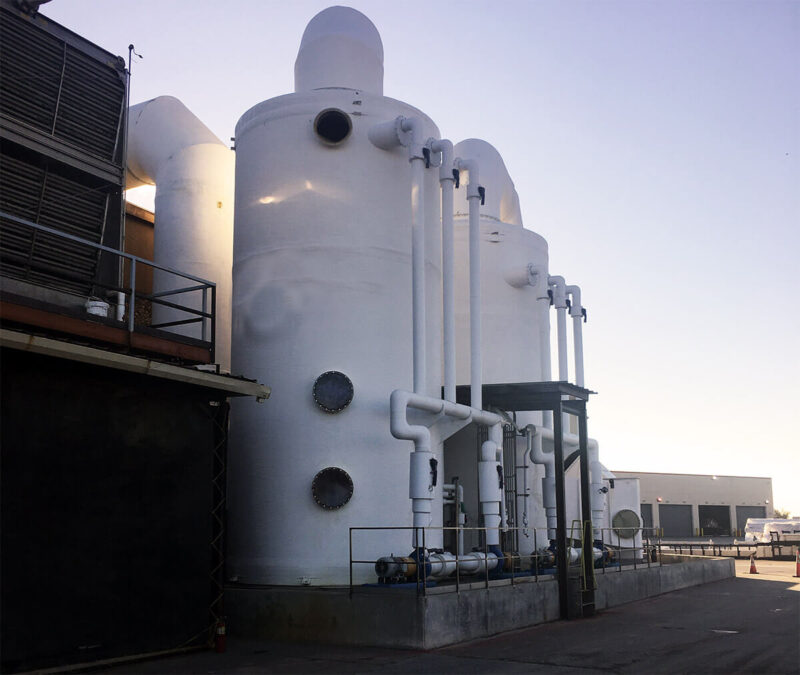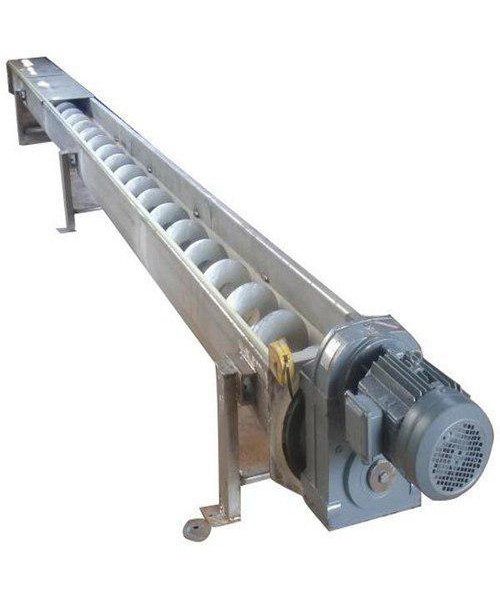What is Venturi Scrubber (E.S.I)?
A venturi scrubber or atomized gas spray can increase gas flow rate in order to increase gas-liquid contact. In a Venturi model, a throaty part in the duct that enters the gas stream while the duct is narrowed and expanded. As gas enters Venturi’s bottle, gas speed and turbulence increases either. The washing liquid is sprayed into the gas stream before it encounters gas with Venturi’s throat. Then, the washing liquid is atomized by turbulence in the bottleneck and the interaction of the drop-oil increases.
Venturi products have the advantage of being easy to design, easy to install and maintain low maintenance requirements. A number of Venturi scrubbers are designed to facilitate speed control by varying the Venturi stroke. Due to the high interaction between suspended particles and droplets, Venturi models have a high collection capacity for small particles. Unfortunately, increasing the Venturi’s efficiency requires an increase in pressure drop that increases energy consumption.
Particle collecting and penetration mechanisms
The dominant tool for tightening particulate matter in the production of wet scrubbers is the inertia of inertia of suspended particles on liquid droplets. Brainy spraying (random) also results in particle collecting, but its effects are significant only for particles with a diameter of about 0.1 μm or less. Direct separation is another mechanism for collecting scrubbers. Scrubber’s less important collecting mechanisms use gravitation, electrostatic and condensation.
The inertia incident in Venturi scrubbers is due to a change in the velocity of suspended particles in gas and gas itself. When the gas is flowing into an obstacle like liquid droplets, it changes direction and flows around the droplet. The resulting particle movement is a combination of still and post-fluid forces. This leads to impurities in particles that dominate inertia and also creates a subductor for particles that are affected by post-liquid force. Coarse particles, or in fact particles larger than 10 μm, are easier to collect with the inertia of the inertia, because they have more inertia entrapment, which will resist changes in the gas flow and, as a result, affect the droplet. Small particles (i.e., particles smaller than 1 μm) can be more difficult to collect by inertial impregnation because the particles remain in the streams of gas flow due to the overcoming of the post-liquid force.
Collecting through diffusion occurs due to fluid motion and browning (random) motion of particles. This motion of particles in the chamber causes direct particle-liquid contact. Since this call is irreversible, the collection of suspended particles is carried out through a liquid. The effects of intrusive collection of particles with a diameter of less than 0.1 μm are significant. Direct separation occurs when the path of a particle is placed inside a collecting radius (or collection) in the scrubber, a liquid droplet. This pathway is likely to be the result of inertia, diffusion, or fluid motion.
The gravitational collection, or collection, which is the result of the collision of particles dropping droplets, is largely related to impaction and separation, and in some scrubbers it is considered as a partial and partial mechanism. Gravitational sedimentation of particles is not usually a major factor due to high gas velocities and short periods of time. In general, electrostatic adsorption is not an important mechanism unless the particles, liquid, or both are intentionally charged or charged or when the Venturi scrubber follows an electrostatic precipitator. Some scrubbers are designed to increase the absorption of particles through condensation or density. In such cases, the flow of the dust carrier is saturated with the liquid (usually water). The particles then act like condensate nuclei, and as more fluid becomes condensed around them, their size is increased and easier to collect by inertia incidence.
The mechanisms for collecting wet scrubbers, to a large extent, depend on the size of the particles. Inertia impaction is the main collection mechanism for particles with diameters greater than about 0.1 m. The effectiveness of the inertia incidence increases with increasing particle size. In general, propagation is only effective for particles with a diameter smaller than 0.1 m, and the collecting efficiency increases with increasing particle size. The combination of these two main mechanisms for collecting scrubbers will help minimize the collection efficiency for particles with a diameter of about 0.1 m. The exact minimum efficiency for a particular scrubber type depends on its type, condition and dispersion of the particle size in the gas flow. In a separate section, more attention is paid to the issue of collecting efficiency.


